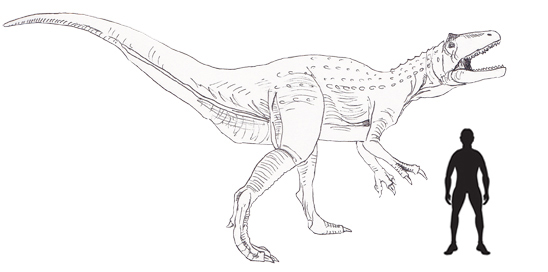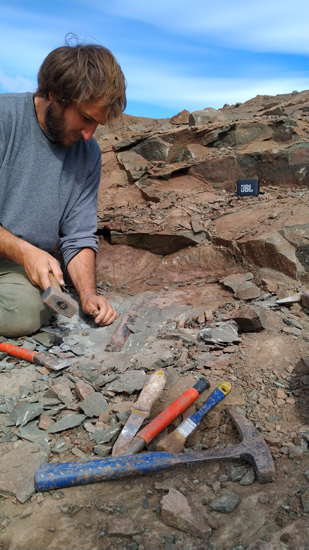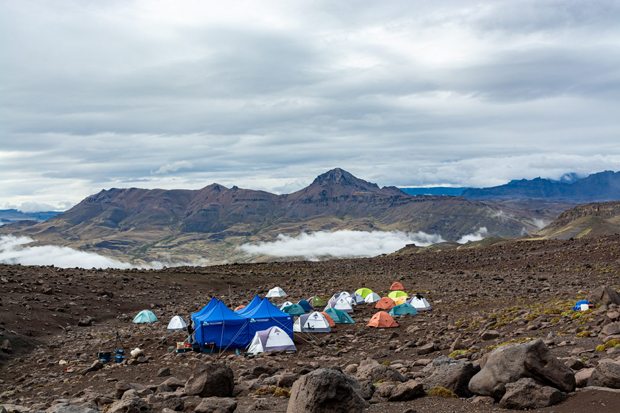Ten-metre-long Giant from Patagonia
A team of international scientists led by Dr Fernando Novas of the Museo Argentino de Ciencias Naturales (Buenos Aires, Argentina), have been exploring the Upper Cretaceous, fossil rich beds at Estancia La Anita in the Province of Santa Cruz, Patagonia. In a media release, circulated this week, the researchers from the Museo de Ciencias Naturales report the discovery of the fossilised remains of a giant megaraptorid dinosaur. At an estimated ten metres in length, it potentially represents the largest confirmed member of the Megaraptora clade discovered to date.
A Field Team Member Carefully Removing Overburden Close to a Fossil Bone
Picture credit: Museo Argentino de Ciencias Naturales
Upper Cretaceous Sediments
The research team, which includes scientists from a number of Argentinian universities as well as colleagues from the National Museum of Tokyo (Japan), have spent much of the early part of the Southern Hemisphere autumn, working in the remote and mountainous Estancia La Anita which is some 1,750 miles (2,800 km), south of Buenos Aires. Many different vertebrate fossils were found, including those of the basal iguanodontid Isasicursor. The palaeontologists speculate that rather than attack the titanosaurs that lived in this region during the Late Cretaceous, megaraptors may have specialised in catching smaller, more agile prey such as the five-metre-long Isasicursor.
Members of the Megaraptora were quite lightly-built, long-armed carnivores. Very little is known about these dinosaurs, although they do seem to have been both geographically and temporally widely dispersed. They were not closely related to the dromaeosaurids, a family of dinosaurs that includes the “raptors” such as Velociraptor.
A Speculative Life Reconstruction of the Giant Megaraptor from Argentina

Picture credit: Everything Dinosaur
Everything Dinosaur’s website: Everything Dinosaur.
Elements from the rib cage and vertebrae have been found, but sadly no skull material has been reported. It is likely that a new genus will be erected as a result of these discoveries, the scientific paper is likely to be published next year.
The Field Team’s Campsite at the Remote Location
Picture credit: Museo Argentino de Ciencias Naturales
One of the Last of its Kind
The fossils represent the youngest material discovered to date that have been assigned to the Megaraptora. It is therefore quite likely that these types of theropod persisted until the extinction of the non-avian dinosaurs. Fernando Novas has been instrumental in the development of our understanding of this type of carnivorous dinosaur. It was Dr Novas who co-authored the review of theropod dinosaurs from Argentina in 2013, that led to the establishment of the Megaraptor clade.
To read a related article from Everything Dinosaur that looks at the ancient biota from this part of the Late Cretaceous of Argentina: Dinosaurs from the End of the World.
Recently Haolonggood introduced a megaraptor dinosaur model.
To view the Haolonggood model range: Haolonggoodd Prehistoric Animal Models.








Leave A Comment